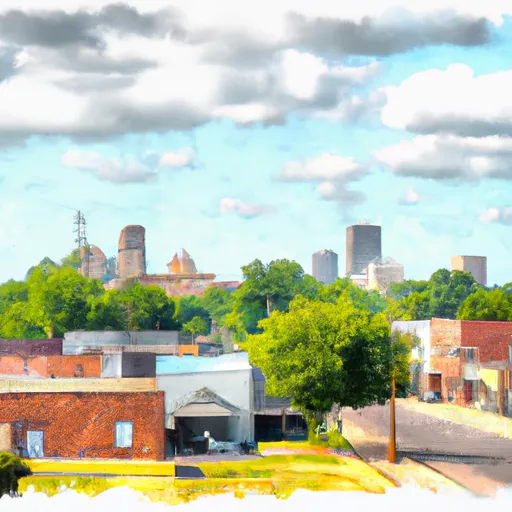-
 Snoflo Premium
Snoflo Premium
Get unlimited access to all our content
With no Ad interruptions! - Start Your Free Trial Login with existing account
Montrose
Eden Index
Climate
7.4
•
Recreation
3.6
•
Community
•
Safeguard
4.2/10

Montrose, Arkansas is a small town located in the southeastern part of the state. It has a humid subtropical climate characterized by hot and humid summers, with average temperatures reaching the mid-90s°F, and mild winters, with temperatures dropping to the mid-30s°F. The area experiences rainfall throughout the year, with the wettest months being April and May.
Montrose is situated near the Mississippi River, contributing to its hydrology constituents. The town benefits from the river's water supply, which supports agricultural activities and offers opportunities for recreational activities like fishing and boating. The region also has several small lakes and ponds, providing additional options for water-based recreation.
Outdoor recreation opportunities in Montrose are plentiful. The surrounding area offers picturesque landscapes for hiking and nature walks, with forests and scenic trails providing an ideal setting for exploring nature. Hunting is also a popular activity, with deer, turkey, and other game species present in the region. Additionally, birdwatching enthusiasts can enjoy the diverse avian species that inhabit the area. Overall, Montrose provides a range of outdoor activities for residents and visitors to enjoy in its beautiful natural surroundings.
What is the Eden Index?
The Snoflo Eden Index serves as a comprehensive rating system for regions, evaluating their desirability through a holistic assessment of climate health, outdoor recreation opportunities, and natural disaster risk, acknowledging the profound impact of these factors on livability and well-being.
Climate Health Indicator (CHI): 7.4
Montrose receives approximately
1406mm of rain per year,
with humidity levels near 90%
and air temperatures averaging around
18°C.
Montrose has a plant hardyness factor of
8, meaning
plants and agriculture in this region tend to thrive here all year round.
By considering the ideal temperature range, reliable water supplies, clean air, and stable seasonal rain or snowpacks, the Climate Health Indicator (CHI) underscores the significance of a healthy climate as the foundation for quality living.
A healthy climate is paramount for ensuring a high quality of life and livability in a region, fostering both physical well-being and environmental harmony. This can be characterized by ideal temperatures, reliable access to water supplies, clean air, and consistent seasonal rain or snowpacks.
Weather Forecast
Streamflow Conditions
Lower Ouachita
Area Rivers
Lower Ouachita
Snowpack Depths
Lower Ouachita
Reservoir Storage Capacity
Lower Ouachita
Groundwater Levels
Recreational Opportunity Index (ROI): 3.6
The Recreational Opportunity Index (ROI) recognizes the value of outdoor recreational options, such as parks, hiking trails, camping sites, and fishing spots, while acknowledging that climate plays a pivotal role in ensuring the comfort and consistency of these experiences.
Access to outdoor recreational opportunities, encompassing activities such as parks, hiking, camping, and fishing, is crucial for overall well-being, and the climate plays a pivotal role in enabling and enhancing these experiences, ensuring that individuals can engage in nature-based activities comfortably and consistently.
Camping Areas
| Campground | Campsites | Reservations | Toilets | Showers | Elevation |
|---|---|---|---|---|---|
| Pendleton Bend | None | 172 ft | |||
| Alley Spring - Ozark National Scenic River | 162 | 672 ft | |||
| Rising Star | None | 196 ft | |||
| Lake Fausse Pointe State Park | None | 5 ft | |||
| Hermann City RV Park | 20 | 509 ft | |||
| Pulltite - Ozark National Scenic River | 55 | 817 ft | |||
| Poverty Point Reservoir State Park | 50 | 97 ft | |||
| Round Spring - Ozark National Scenic River | None | 673 ft | |||
| Oak Grove City Park | 30 | 117 ft | |||
| Graham Cave State Park | None | 778 ft |
Nearby Ski Areas
Catastrophe Safeguard Index (CSI):
The Catastrophe Safeguard Index (CSI) recognizes that natural disaster risk, encompassing floods, fires, hurricanes, and tornadoes, can drastically affect safety and the overall appeal of an area.
The level of natural disaster risk in a region significantly affects safety and the overall livability, with climate change amplifying these risks by potentially increasing the frequency and intensity of events like floods, fires, hurricanes, and tornadoes, thereby posing substantial challenges to community resilience and well-being.
Community Resilience Indicator (CRI):
The Community Resilience Indicator (CRI) recognizes that education, healthcare, and socioeconomics are crucial to the well-being of a region. The CRI acknowledges the profound impact of these elements on residents' overall quality of life. By evaluating educational resources, healthcare accessibility, and economic inclusivity, the index captures the essential aspects that contribute to a thriving community, fostering resident satisfaction, equity, and social cohesion.

